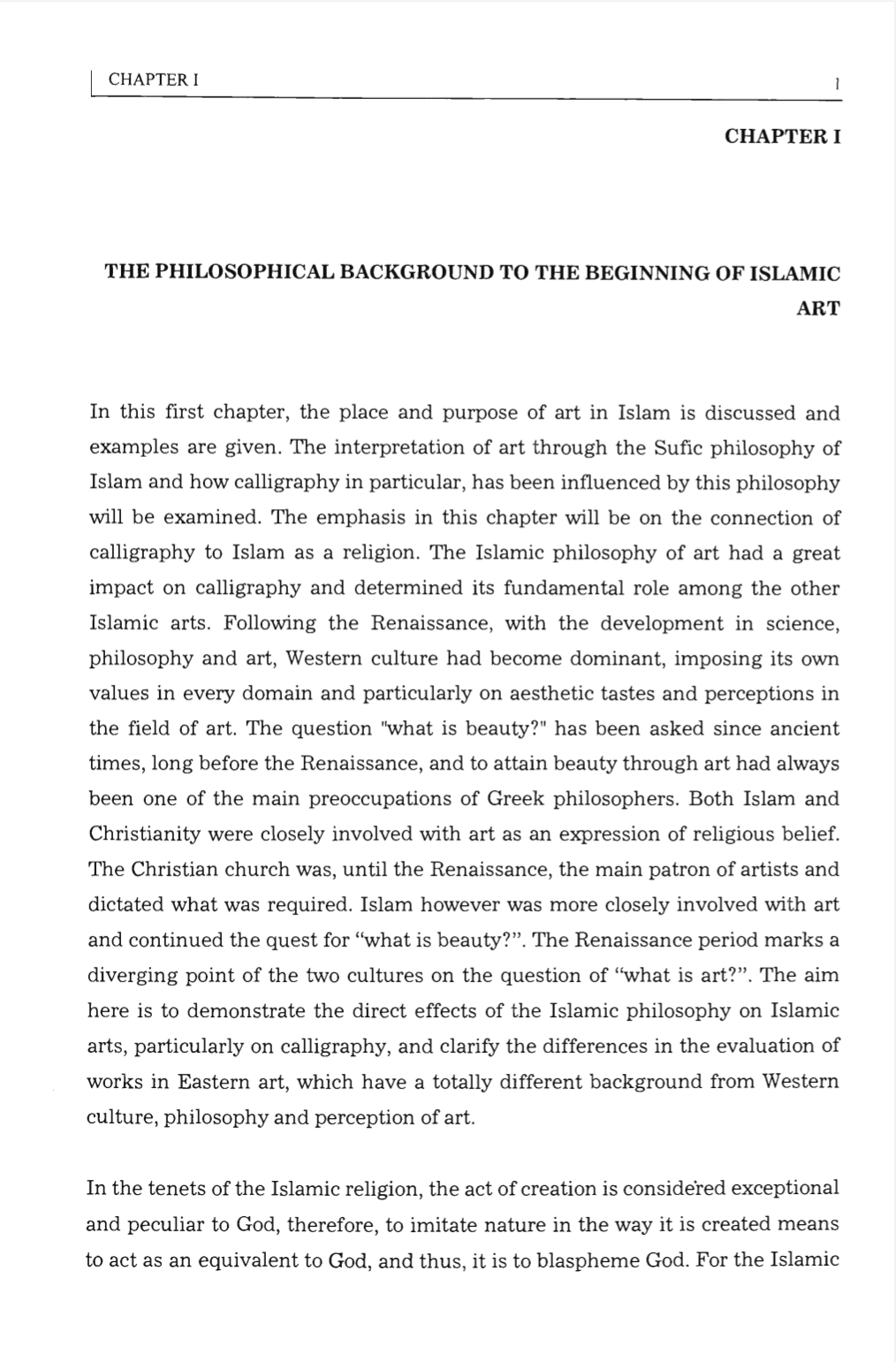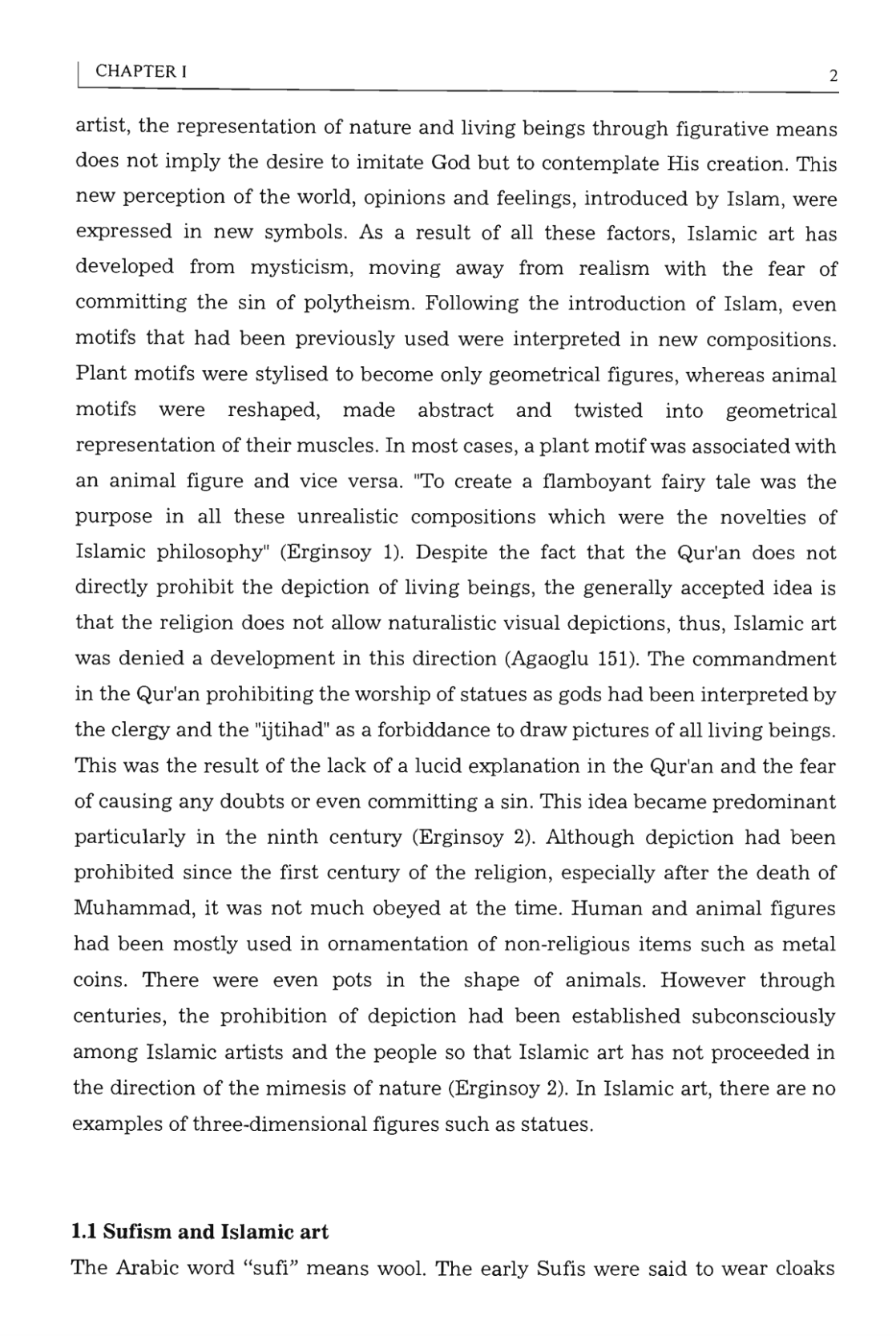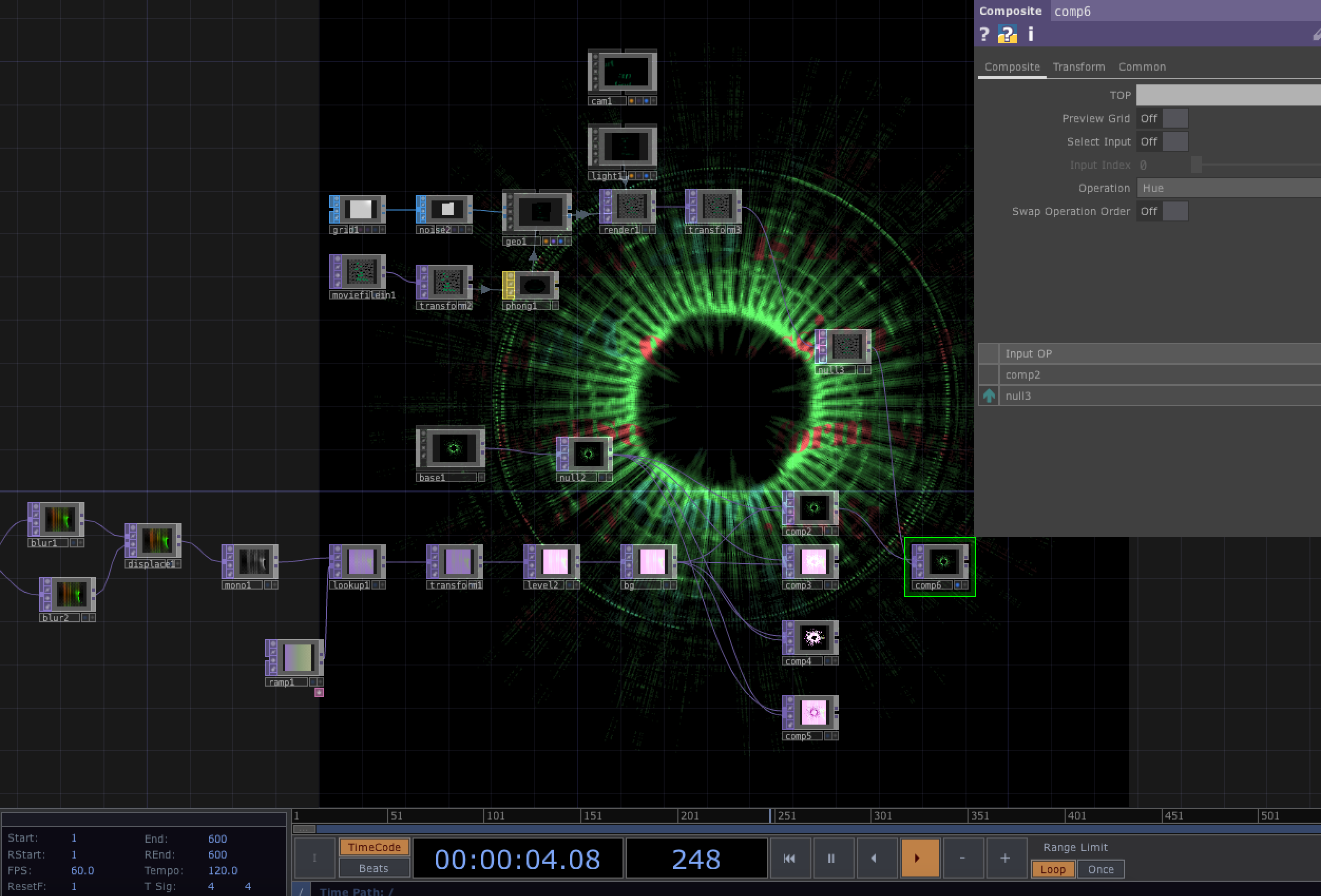Original Text
"A study of Kufic script in Islamic calligraphy and its relevance to Turkish graphic art using Latin fonts in the late twentieth century" wrote by Enis Timuçin Tan, mainly talks about Islamic art.
I chose the introduction of Islamic art in Chapter 1 as my original text for research. Here, the author wants to express the rules of Islamic art and culture and why Islamic art is mainly in 2D form.


